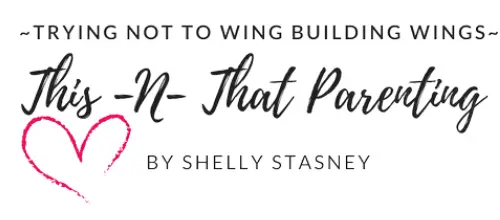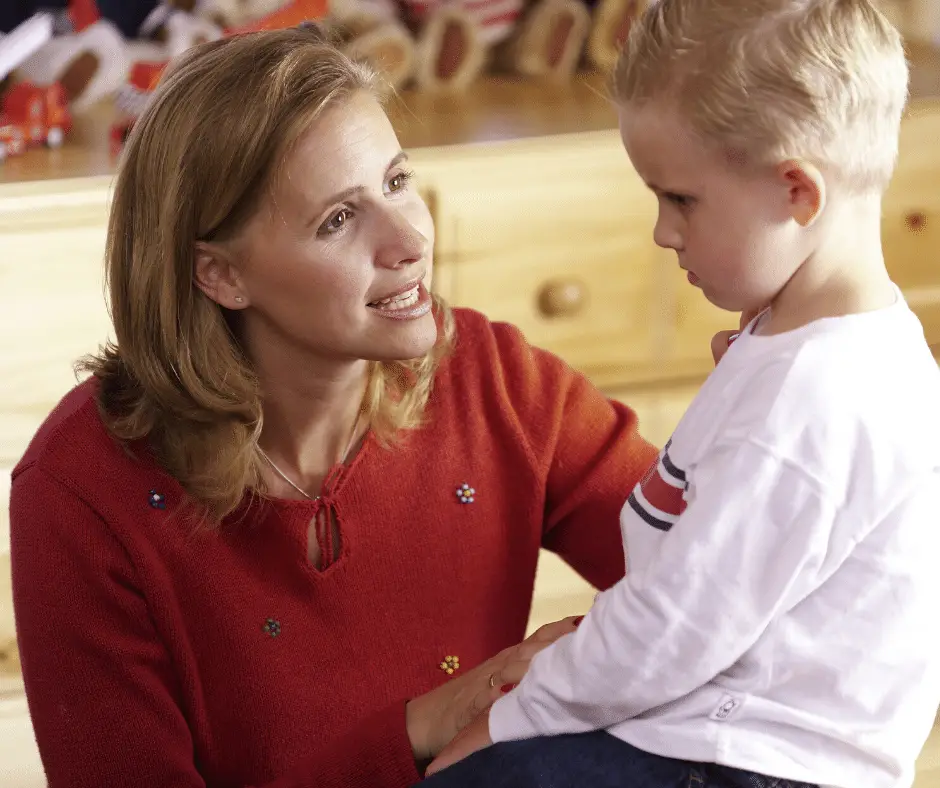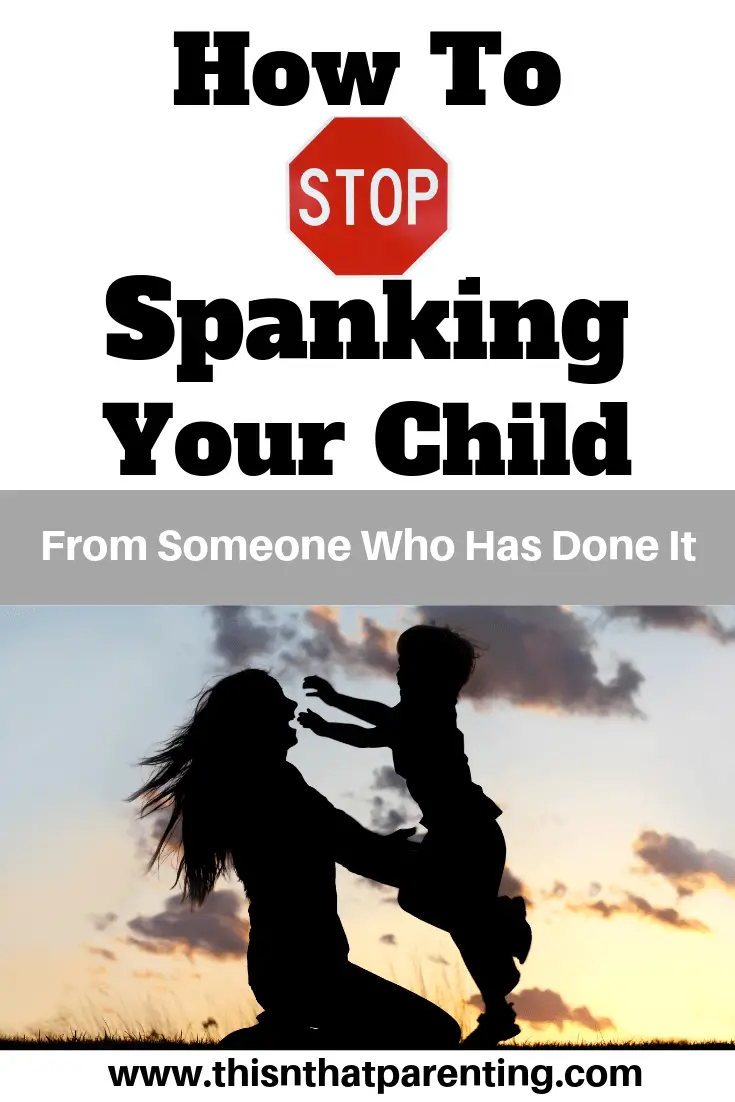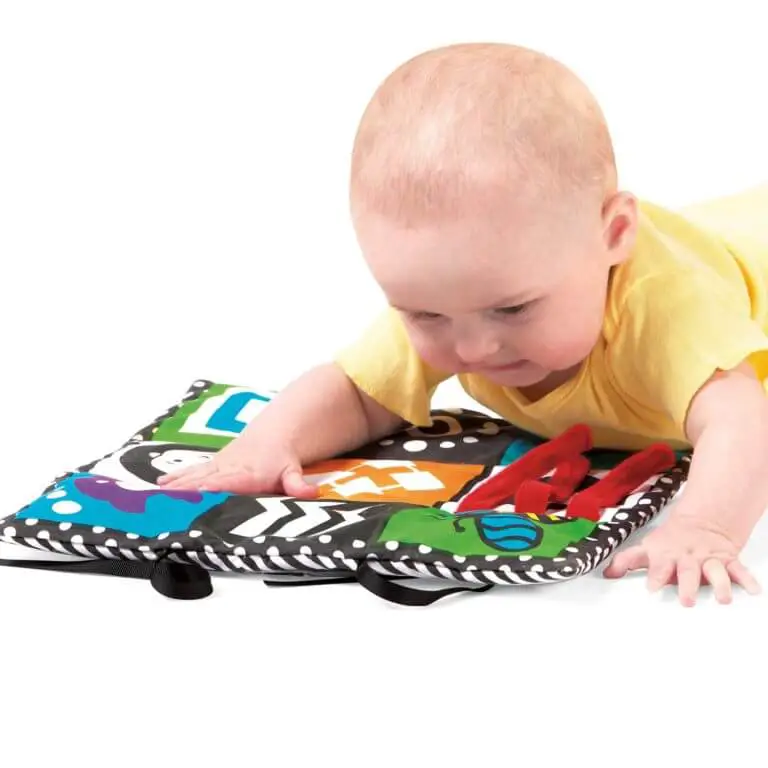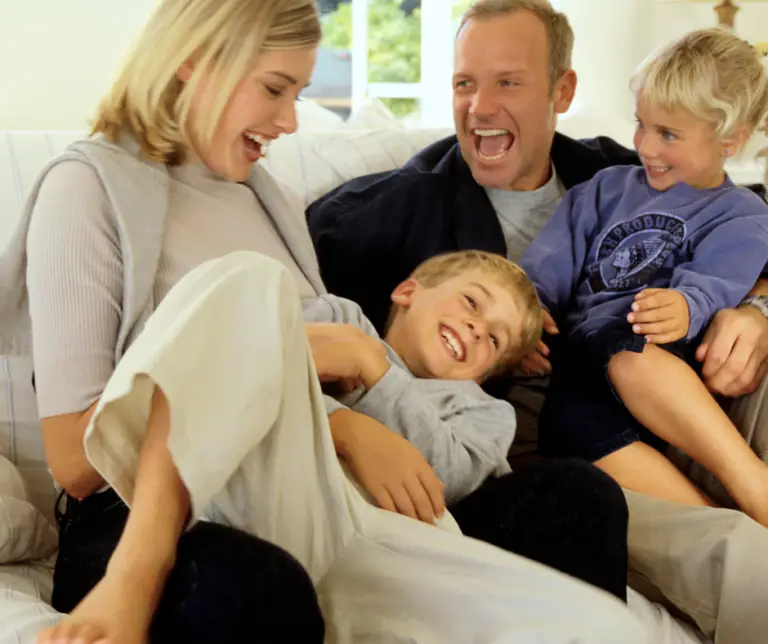Alternative Discipline Methods For Spanking Or Punishment
When you make the wise decision to quit spanking your kids, it doesn’t take long before the questions arise. “What am I going to do instead of spanking? I can’t just let my child get away with murder. I don’t want to be a permissive parent. What if my child grows up to be a criminal?”
These are totally normal thoughts. Without a doubt, you have to have a mindset change when you switch from practicing punishment to using coaching and teaching your children through connection instead. You now take the time to teach the desired behavior instead of inflicting suffering for the wrong behavior.
The goal is to raise children who do what is right because it is the right thing to do NOT because they are afraid of getting hit or receiving any punishment for that matter. Think about it. What good is that for your child short term or long term?
The Characteristics Of Punishment
- Makes the child feel ashamed
- The child will do better out of fear.
- It’s not related to the behavior.
- Sends the message that the child is the problem instead of the behavior or the damage done
- There is physical pain.
Changing From A Physical Discipline Mindset To A Connect and Teach Mindset
The first belief that you must accept and own is that parenting is just as much if not more about your behavior than your child’s behavior. It is about your self-control and how you do life.
Children will be children no matter what. They go through developmental stages and they test the boundaries every step of the way. Your job is to model the self-control of navigating life within the boundaries. To do this well, self-care and connection with your child have to be priorities.
PIN IT
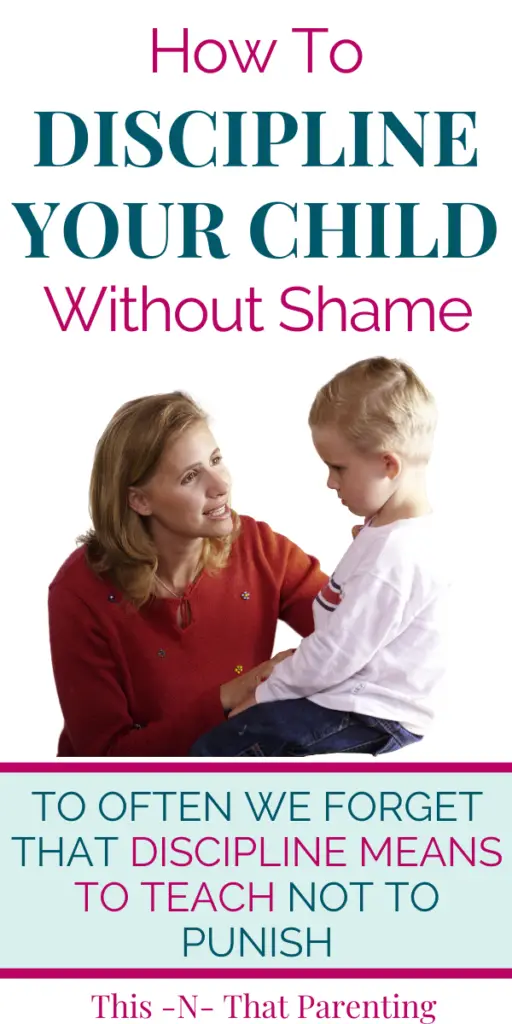
Self-Care
In order to be the best version of yourself, you have to be taking care of yourself. If you’re expecting to have self-control, you need to be on your A-game. The better you treat yourself, the better you will treat others.
It is likely that you’ll be a more peaceful parent. Self-love impacts how others perceive you and how the world treats you. Ultimately, self-care can change your descendants’ lives. This whole self-care thing is a domino effect.
There are 5 areas of self-care to pay attention to. The areas that you need to focus on are your physical, spiritual, intellectual, social and mental/emotional habits. The 3 most important to focus on are sleeping, eating well and moving your body.
The moral of the story is – if your self-care journey only ever has one season… the hardly any self-care season, it’s time to be intentional about loving yourself.
What if I told you that you can only love others as well as you love yourself? It’s true.
If you are not taking care of yourself, this will affect your mental health. Quitting spanking and punishing will challenge you mentally. It is more likely you will be successful in quitting if you take care of you first!
Which of the 5 areas are you doing well in? Which ones do you need improvement in?
Related Article: Self-Care 101: Be Intentional About One of the Hard Basics of Motherhood
Want More On Self-Care?
- 105 Ways To Make Your Kids Laugh: Laughter Is The Best Medicine
- 5 Steps To Self-Love: An Essential Component To Parenting
- Know YOUr Self-Identity – Get Back To YOUr Roots
- Parents: Stop Judging Each Other And Unite
- 5 Things Mom Can’t Live Without
- Self-Care For Moms: Intentional Habits That Are Proven To Bring Peace
- 7 Easy Tips To Be A More Patient Mom
It’s All About the Relationship – Connecting With Your Kids
Staying connected to your child is your most important job as parents. Staying emotionally connected to your child sets you up for positive relationships with your children. Also, it is preventative maintenance because it increases the chances your child will listen to your request.
Children do not care how much you know until they know how much you care! That’s it- it’s all about relationships with children. Children want to please the adults they feel connected to, and it is the parent’s job to stay connected while setting limits.
Parenting isn’t a set of strategies. It is a relationship. We intentionally use strategies to see the results we desire in our relationships with children. Again, parenting is about teaching and modeling the behavior we desire to see in our children instead of spanking. We show and tell our children how to behave. We don’t force them to behave.. Here are 4 ways to stay connected to your child:
- How do you spell love to a child? T-I-M-E! The number one way to connect with your child is present parenting. The better off you are with your self-care the more you will be able to offer presence. Set a goal to give your child X amount of minutes of your undivided attention a day. At least 20 minutes is best, but do what you can.
- Eat at least one meal a day with your child. This is the easiest way for the whole family to connect, find out how everyone is doing and what is important in each other’s life. At the same time, your children learn group conversation etiquette.
- Take your child on special one-on-one outings. This tells the child, “I see you. You matter.” At the end of the day, that’s what children want.
- Build-in rituals that enable a connection with your child. Examples: Morning rituals, bedtime rituals, in the car rituals, I Love You Signals…
Connecting with our children and creating strong relationships with children takes time, intentionality and work. I have found if I think of it in terms of the quality of the time I spend with my kids instead of the quantity of time it takes off some of the pressure. Finally, if we show up and give our best for that time, kids know we care. When you connect and teach instead of spanking your child, you are choosing a higher quality of living for your family.
Related Article:4 Simple Ways For Connecting With Your Child
Related Video: Become a YES Parent. Connect With Your Child
The Benefits of Using Consequences Instead of Spanking or Punishment:
- Reduces hindering relationship
- Develops self-discipline and internal motivation
- The child will be less likely to lie, blame, and hide because they don’t have FEAR of punishment. They learn “real world” affects. When you do wrong, there are consequences instead of spanking. Spanking is not what happens once you move out of the home. Consequences happen instead of spanking.
- Reduces rebellion and low self-esteem because the child learns that they’re not under the judgment of the parent
- Teaches accountability
- The child makes good choices because they are right NOT out of fear.
- Much less of an impact on the child’s mental health.
3 Types of Consequences to Use Instead of Spanking:
By now, I’m sure you’re thinking, all of this sounds great, but is my kid going to just automagically not have any challenging behavior if I do this stuff? Guess what? No. They will be a child just like God created them to be.
They will test the boundaries, ignore your requests at times, have an insatiable curiosity, unload their emotional backpack, and do things in public that make you want to run away. After all, if you know anything about the development of your child’s prefrontal cortex, then you know these behaviors are all normal and expected from children.
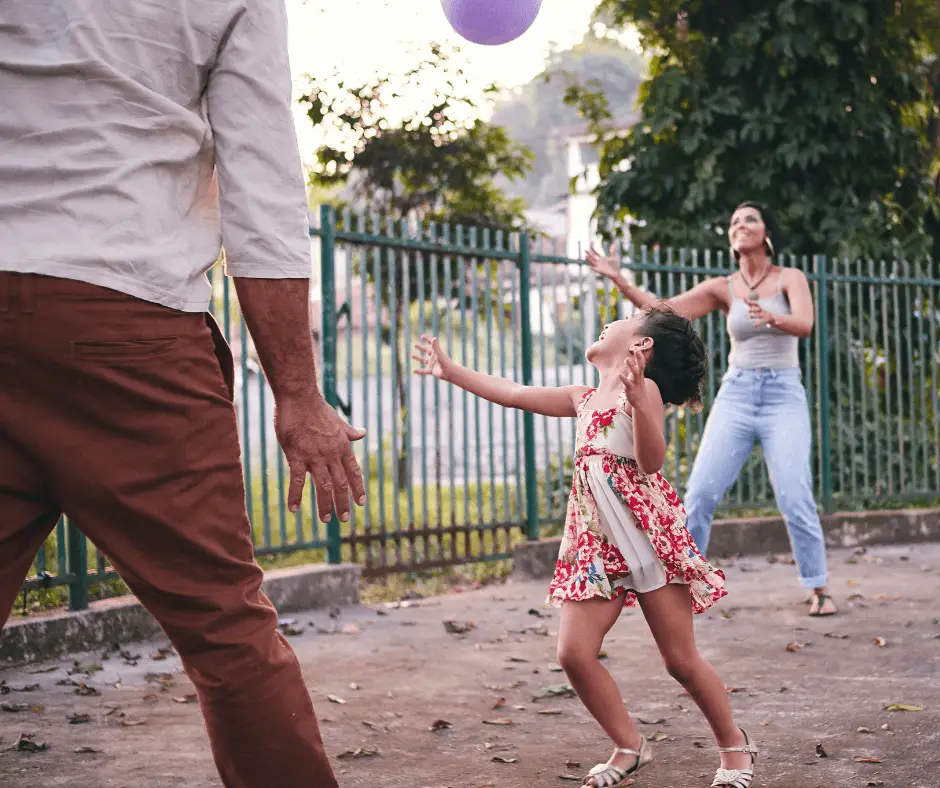
Your child is going to be a child whether they’re spanked or not. This is why it is worth using consequences instead of spanking. These alternatives to spanking will get you started on a much healthier path of disciplining your child.
What can you do when your child displays behavior you don’t care for? You use consequences that teach and guide your child to the expected behavior. I know. This is all so different than what your family is used to! It was for me too. Again, repeat with me, I want to raise a child who does right because it’s right NOT because they’re scared of being hit!
1. Natural Consequences:
Natural consequences allow discomfort to occur naturally rather than a parent creating a consequence. These are imposed by nature, society, or another person. When at all possible, this is the best consequence to use.
These are the consequences that parents tend to protect their child from experiencing the most, but unfortunately, this can lead to enabling. In fact, try to let the chips fall where they may.
Examples:
- When a teen doesn’t do their laundry, eventually, they have no clean clothes to wear.
- If a child doesn’t eat, eventually they’ll be hungry.
- When you don’t wear a jacket, you will get cold.
- If you don’t put up your shoes, the puppy will chew it up. (Ask me how I know!)
Don’t Use When:
- The child is in danger Ex: Playing in the street
- The consequence doesn’t occur immediately Ex: Failure to do school work
- If it affects others such as peers, siblings, parents or pets
2. Logical Consequences:
The parent creates logical consequences, but they are in direct correlation to the negative behavior. No physical pain, blame or shame.
How To:
- Only come up with consequences you will follow through on
- Wait until you have both calmed down before you speak
- Don’t make up the consequence while angry
- Think about the consequences in advance when possible.
- Parents need to discuss consequences and agree before implementing them when possible
Examples:
- The child keeps breaking their curfew or boundaries when they leave home, so they will stay home for 2 weeks.
- She has not been doing her homework because she chose to play video games, so she will not play video games on school nights until she has turned her homework in on time for 2 weeks straight.
- You tell him to do something. He says NO! He sits beside you until he is ready to listen.
- She says something mean to her sister. She names 5 nice things about her sister.
3. Conflict Resolution:
Conflict resolution involves the child in coming up with a solution to the problem.
How to:
- State the problem with positive intent and a focus on what you would like children to do.
- Ask the child for ideas on how to solve the problem.
- Hold family meetings to brainstorm solutions to chronic problems that are happening in your household
Examples:
- The bathroom is continuously messy. What can you do?
- Both of you want to use the camera. What can ya’ll do?
- The teacher emailed me that you haven’t turned in your homework much this week. What can we do to make sure you get it done every day?

*If the consequence doesn’t fit into one of the above 3 categories, there’s a good chance what you are doing is punishment:
Call to Action
You can and you will do this! How are you going to switch to consequences instead of spanking or punishment? You’re going to remember your why is much bigger than your how! Think about all the research that shows the negative effects of spanking.
You will think about how you want your child to remember you as a peaceful parent NOT a punishing parent. You’re going to think about the fact that you are changing your family’s legacy and mental health for generations to come. You can think about how it feels ludicrous to punish your child for misbehavior yet no one punishes you for yours.
Think about the GENIUSness of now teaching your child how to behave instead of them behaving because they fear you. Remind yourself that spanking is the lowest form of parenting, and you will NOT be a bottom feeder.
I encourage you to come up with your own list of Whys. In the hard moments of parenting, your script of WHYs will get you to the other side as peacefully as possible.
Secondly, it is a great idea to study and know what positive parenting alternatives you will use instead of punishment. Don’t expect to come up with these in the heat of the moment when your brain is already in fight-or-flight mode.
Beforehand, have a plan for how you will stop spanking and what you will do instead. Furthermore, if you follow the suggestions given, you will look back a year from now, and you won’t ever believe you were ever a spanker!
Lastly, keep in mind that when you focus on self-care and connection with your child, it will be so much easier to use modeling and consequences instead of spanking and other punishment.
As you can see, a lot of effort and intentionality goes into being a parent who has self-control. This -N- That Parenting is built on what I learned in 15 years of teaching and what I am learning on this journey to becoming a better parent every day.
If there’s one thing that stands out, it’s that it is beneficial to surround yourself with others who want to get better at parenting too. You can find information to help you on your journey on the blog and on the YouTube as well as in the weekly letters I send my tribe. Stay connected. Parent Together.
GET SUPPORT TO STOP SPANKING
If you would like some support in quitting spanking, email me at [email protected]. Seriously, let’s get on the phone and see how I can help make this experience easier on your family. We are better at things when we do them together, and we feel supported. Remember, it is stronger to ask for help than to do nothing.
Quitting Spanking Series:
- To Spank or Not to Spank? The Decision We Made and How We Made It
- 10 Reasons to Stop Spanking That Are Backed By Research
- How To Stop Spanking Your Child
- What To Do Instead of Spanking and Punishment
Make it a great day or not, the choice is yours! Remember to have fun, laugh and give God the glory! I love you! SS
